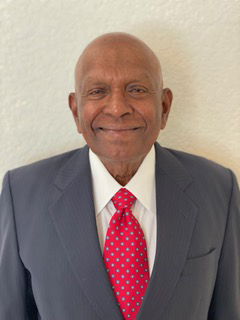
ARTIFICAL INTELLIGENCE IN HEALTH CARE

For the past one year, almost every day we hear something about Artificial intelligence in the news media. Some people think it is revolutionary while others think it may bring doomsday faster. What is the hype? What is Artificial intelligence or AI?
Basically, AI is utilization of all available known data to create algorithms by machines to solve problems, recognize words or visual aspects within images and make predictions, based on statistical probabilities. Trillions of bits of information, videos, historical events and volumes of printed or digital materials are all stored in robotic computer systems, and it can come up with instant answers, predict outcomes and help in policy making. Like the human brain, it stores and remembers everything – only in a better fashion and more accurately than the human brain.
This technology and its awareness exploded into the common market nearly a year ago when a company by name Open AI introduced Chat GPT, which stands for Generational Pre-trained Transformer. Chat format is used to ask questions and to get answers. In a short time, it has become a popular search engine. In addition, it can write essays, stories and poems instantly. More advanced versions like GPT 4 help with creating images, photos and videos.
Artificial intelligence is expected to influence or modify every walk of life. The educational system is already adjusting from teaching to testing. The Writer’s Guild of America went on a strike for several weeks seeking protection from AI. Food industry and automobile manufacturing as well as all industries are incorporating AI in their activities. Health care is also undergoing big modifications for the betterment of patients and doctors.
The technology is expected to make the entire health care system more efficient and less expensive by improving accuracy, reducing errors, helping make decisions and policies, streamlining workforce and facilitating administrative tasks.
Early diagnosis of cancers and other disorders will be possible by reading X-rays, CAT or MRI scans more accurately, which in turn will facilitate initial treatment with a better outcome. It is said that cancers can be detected one year ahead of the current conventional tests. The time taken by a radiologist to read a stack of X-rays can be reduced from an hour to four minutes.
Incorporating AI in the electronic medical records provides better algorithms for patient management, treatment protocols, reducing medication errors, and finding prognostic indicators. It is said that the primary care doctor will save about two hours of work daily with AI assistance. AI can individualize patient care based on that person’s medical records, past medical issues and medications.
Surgery is another beneficiary of AI. Virtual 3 D images can be constructed out of regular CT or MRI scans to clearly delineate tumors or other anomalies inside any part of body, so that rehearsal surgery can be done virtually before actual surgery. As soon as a surgical procedure is under way, it can predict how long the surgery is going to last, warn of potential injuries or complications and guide the surgeon on safe pathways. Even before the surgery is scheduled, it can predict the prognosis or success of the operation so that the doctors can advise patients and families accordingly.
Pathologists who make final diagnosis by studying the cellular patterns under the microscope are often uncertain themselves. AI can reduce their errors and improve readings, and act as a backup.
Healthcare administrators will be able to streamline their staffing, bed occupancy and reduce overall expenses by predictive models based on past performances.
Medical education will use AI for learning. Instead of cadaveric dissections, virtual body images will be available for medical students to cut open and inspect. Information will be available at their fingertips instead of having to spend time researching books and journals for hours in the library.
Help is on the way for those who have visual or hearing impairment. Smart glasses can read and identify objects. Wheelchairs and walking sticks can assist in detecting hazards and provide alerts.
On the negative side, some experts are afraid of AI. For example, it can easily create fake news or videos and misinform the people. Students can cheat on the exams instead of studying. It may hamper humans from proper development and learning, and performance. Some even go to the extent that it may destroy humanity in the future. Machines may overtake humans at some point. However, science will keep making progress. It is up to us to use the technology for the right cause in the right way. For now, it appears that AI will benefit the health care needs of people.Dr. Venkit S. Iyer, MD, FACS, is a retired General and Vascular Surgeon. He has authored four books – “Decision making in clinical surgery,” “Aging well and reaching beyond,” “The Clinic” and “Geriatrics Handbook.” They are available through Amazon or from the author. His website venkitiyer.com has necessary links and contact information.
Editor’s Note: Khaas Baat sincerely thanks Dr. Ravindra Nathan for his valuablecontributions through his monthly health column starting with our first year of publication.
EYE CARE
Diwali Eye Safety: Protecting Sight during the Festival of Lights

As the enchanting festival of Diwali approaches, the vibrant celebrations and dazzling fireworks become the focal point of the festivities. While Diwali is a time for joy and togetherness, it's crucial to be mindful of potential eye safety hazards that accompany the grandeur of the annual event. In this article, we delve into the medical and health aspects of ensuring eye safety during the Festival of Lights.
Eye safety amidst the fireworks
The resplendent fireworks displays that light up the Diwali night sky are a sight to behold. However, they come with inherent risks to eye health. To protect your vision during these dazzling displays:
a. Maintain a safe distance: It's essential to stand at a safe distance from the fireworks to avoid potential eye injuries from flying debris.
b. Wear protective eyewear: Certified safety glasses or goggles offer a robust defense against sparks and debris, significantly reducing the risk of eye injuries.
c. Leave it to the experts: For those unfamiliar with handling fireworks, it is advisable to leave this to the experts or responsible adults who can ensure safe practices.
d. Prompt medical attention: If an eye injury occurs due to fireworks, it's crucial to rinse the eye gently with clean water and seek immediate medical attention. Avoid any rubbing or applying pressure to the injured eye.
Candle and diya safety
The traditional lighting of diyas and candles is a heartwarming Diwali tradition, but it's essential to be cautious to prevent eye injuries:
a. Secure placement: Ensure that diyas and candles are placed in stable containers to prevent accidental tipping, which could lead to burns or fires.
b. Minimize fire hazards: Position diyas and candles away from flammable materials like curtains and tablecloths to reduce the risk of fires.
c. Use candle golders: Candle holders not only add to the aesthetics but also prevent wax spills and the potential for burn injuries.
d. Supervised use: Do not leave candles or diyas unattended, especially if children or pets are in the vicinity. Always extinguish them properly before leaving the area.
Air quality concerns
Diwali's extensive use of fireworks can have significant consequences for air quality, indirectly affecting eye health. Smoke, dust and pollutants in the air can lead to eye irritation and discomfort.
a. Limit outdoor exposure: During peak firework hours, consider reducing outdoor activities when air quality deteriorates.
b. Air purification: The use of air purifiers can mitigate indoor air pollution, creating a safer environment for the eyes.
c. Lubricating eye dops: Over-the-counter lubricating eye drops can provide relief from eye irritation caused by airborne pollutants.
Child eye safety
Children are particularly vulnerable to eye injuries during Diwali, given their curiosity and limited awareness of potential risks. Ensuring their eye safety is paramount:
a. Constant supervision: Always closely supervise children around fireworks, candles and diyas to prevent accidents.
b. Education: Educate your children about the potential dangers of fireworks and the importance of eye safety.
c. Child-appropriate eye protection: Ensure that children participating in firework activities wear suitable eye protection that fits their age and size.